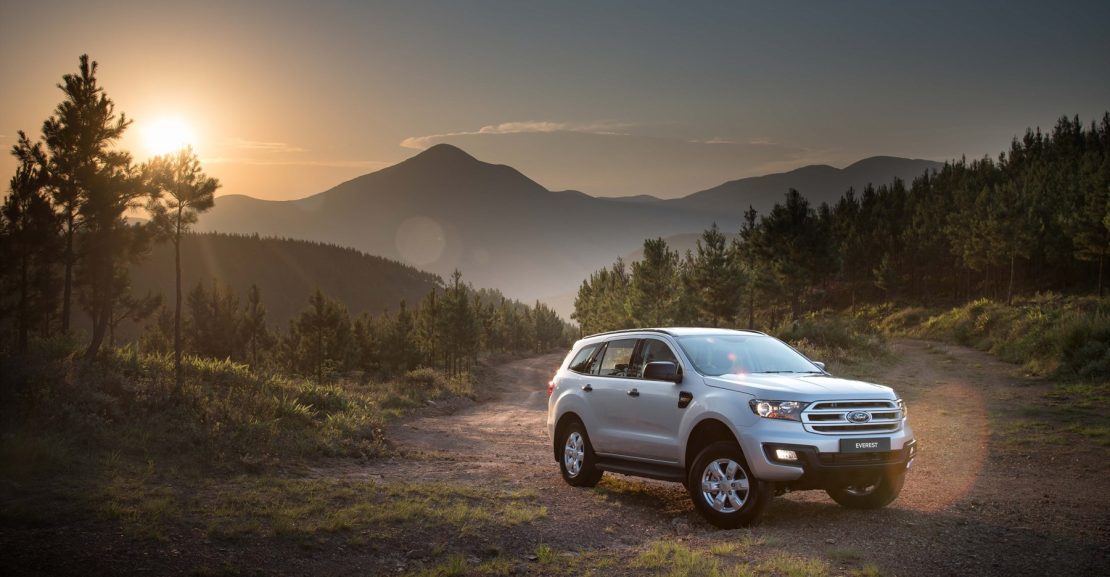Washing hands, disinfecting, not touching your face and wearing masks is only part of the solution. Staying home so that infection won’t spread is now a global effort against COVID-19. Many governments have taken extra precaution by imposing strict travel restrictions, meaning our vehicles may be parked for the foreseeable future.
Keeping your vehicle off the road for an extended period of time might seem uncomplicated but a little love and attention during the next few days can go a long way to ensure that when you are finally ready to hit the road, your vehicle is just as prepared as you are. Ford Motor Company South Africa has ten easy tips to help you carry on smoothly from where you left off.
1. Choose a parking spot
Storing your vehicle in a car port or garage will protect it from the elements and keep it at a relatively stable temperature. If you must leave it outdoors, consider getting a weatherproof car cover to help keep your vehicle clean, dry and shaded.
2. Give your vehicle a wash and wax
Perhaps not the most obvious of tips, but water, dirt, grease and even bird droppings left on your vehicle can damage paint. Make sure to wash your vehicle thoroughly and then consider waxing it. Wax acts as a sealant and protects your vehicle’s paint from the fading properties caused by sun, dirt, and grease.
3. Clean and place a dehumidifier inside the cabin
Give your interior a thorough vacuum. Having a clean car will prevent insects and animals from entering your vehicle and potentially causing damage. Buying a car dehumidifier can help combat unwanted moisture from being absorbed by the interior’s softer materials, especially in more humid climates. Vehicle dehumidifiers require no power supply, thereby putting no additional drain on the car battery.
4. Change the oil and oil filter
Leaving old oil sitting in the engine can cause damage. If you’re planning on storing the vehicle for more than a month, contact your preferred Ford Dealership, once COVID 19 lockdown has ended, to schedule an oil change. It goes without saying, when you change your oil, also change your oil filter. Consider filling up all other fluids like coolant and brake fluid. Doing this before parking your car will save you time in the future and get you back on the road faster.
5. Lubricate
Apply silicone spray as a lubricant to the rubber door and window seals of your vehicle. This will prevent the rubber from cracking, or sticking to the body of your vehicle, especially during hot weather.
6. Fill up the fuel tank
If you expect the vehicle to be in storage for more than 30 days, fill the fuel tank all the way to the top. This avoids moisture accumulation in your fuel tank which leads to oxidisation and corrosion. It will also keep the seals from drying out.
7. Inflate the tyres
Flatspotting is when the spot in contact with the ground (the tyre’s footprint) flattens as it is pressed against the ground’s flat surface. When storing a vehicle for more than a few weeks, set the tyre pressure to OEM specification, drive the vehicle until it is thoroughly warmed up, and then immediately put it up on “blocks”, taking the load off the tyres completely. Not doing this on a vehicle that will be parked for a few months runs the risk of permanently flat-spotting the tyres. For an easier alternative, move the vehicle backwards and forwards every few days to redistribute the weight on the tyres.
8. Leave the parking brake down
If you leave your parking brake engaged, it could possibly become stuck or seized after being parked over time. Unless you are parked on a slope, simply shift your vehicle into Park for automatic transmissions, or engage first gear for manual transmissions.
9. Lift your wiper blades
This very simple bit of advice can save you money and time for when the strict travel restrictions ease. Lift the wipers and place a ball of cloth underneath it so the blades are not touching the windshield. Heat can damage the wiper blades over time and reduce wiping reliability.
10. Start your car once a week
Take at least 10 minutes every week to start your vehicle but remember to open the garage door or move the car into an open space to prevent inhalation of carbon monoxide.
Let the engine idle so the oil and other fluids can circulate through the engine. If you do not have a trickle charger for your battery, give the engine more time to charge the battery. This will keep the battery healthy and ensure an efficient start every time.


